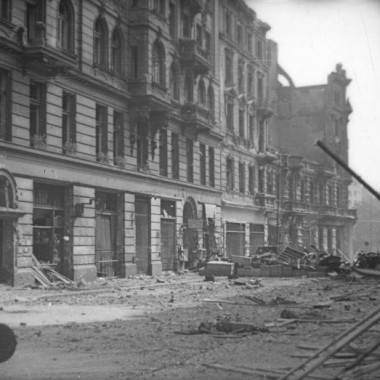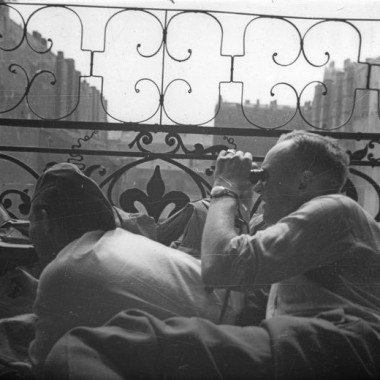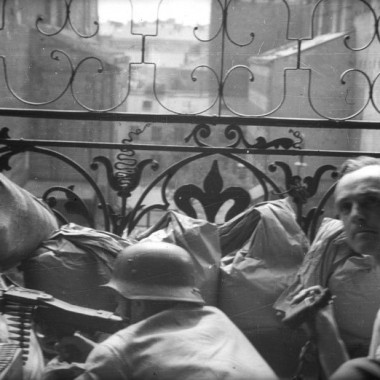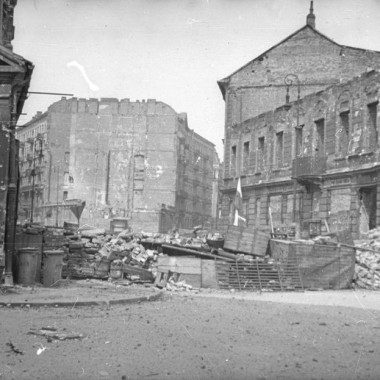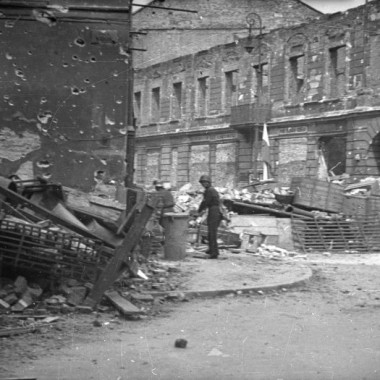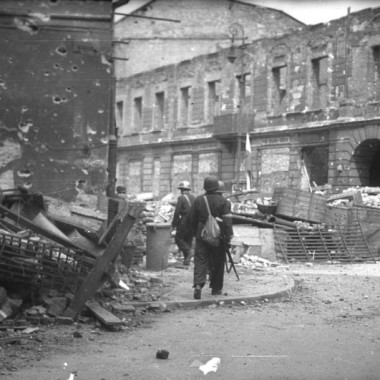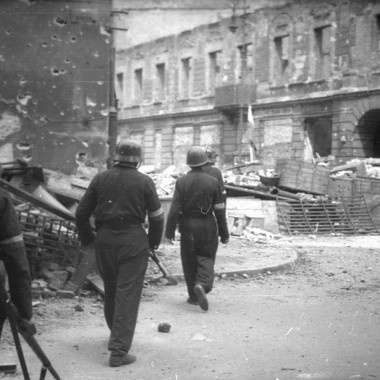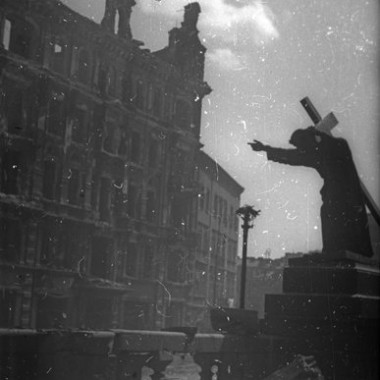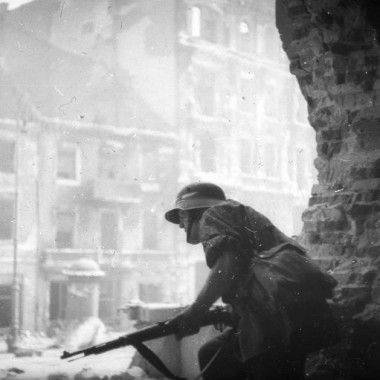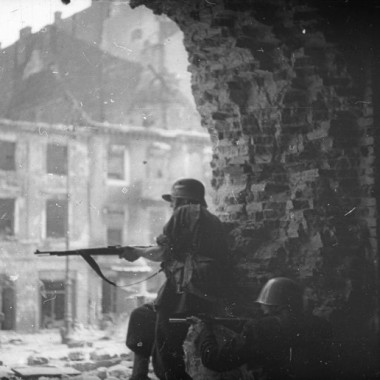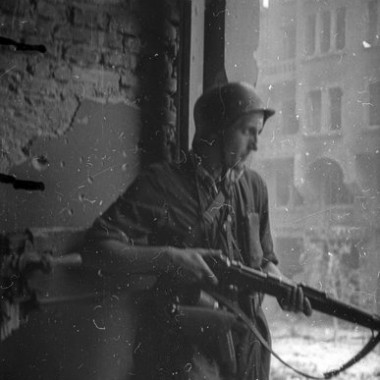Eugeniusz Haneman was born 14 April 1917 in Warsaw. Before the war, he completed Photography Highschool at Konwiktorska Street in Warsaw, where he was a student of an outstanding photographer Marian Dederko. During the occupation, he worked as a portrait photographer in the “Portret przy kawie “ (Portrait over Coffee) and “Van Dyck” studios. The outbreak of the Rising took him by surprise in a dental surgery in the Powiśle district, where he spent a few following weeks. He volunteered for service with the Government Delegation for Poland, which sent him to Kazimierz Greger, the owner of “Foto-Greger” photo store at 38 Nowy Świat Street, to collect a camera and photographic materials. Haneman collaborated with Sylwester Braun “Kris”, the Military Press Reporter (PSW), who had a photographic laboratory at his disposal. After the fall of the Rising, Haneman, following a period of incarceration in the transit camp in Pruszków, ended up in Kraków, where he happened to meet Kazimierz Greger and returned the camera which the former had borrowed for the duration of the Rising. After the war, Haneman began working for Wytwórnia Filmowa Wojska Polskiego (Polish Army Film Studio) in Łodź. However, he was soon sent to Kraków to work as an camera operator and correspondent for the Polish Film Newsreel. In 1946, he returned to Łódź, where he filmed for documentaries. He did not give up photography, and in 1947 he was admitted into the Association of Polish Art Photographers (ZPAF). Between 1949 and 1953, he worked as a camera operator Wytwórnia Filmów Oświatowych (Educational Film Studio) in Łódź, and between 1953 and 2005, he lectured photography at the National Film School in Łódź. He won a number of awards for his photographic accomplishments. A long-time resident of Łódź, Haneman died on 15 January 2014 in Borzęcin Duży, near Warsaw.
The group is comprised of two sets of photographs: ones taken during the Rising, and ones taken after the war in January and May 1945. Images in the first set, taken in City Centre North, South, and Powiśle district, depict such events as e.g. the capture of the Holy Cross Church on 23 August. Appearing in several of those is Sylwester Braun ”Kris”, a Military Press Reporter with whom Haneman collaborated. The other set shows the ruined and desolate city. Apart from the aforementioned photos, there are also a few photographs of the Warsaw Ghetto, taken during the occupation from the window of a moving tram. They survived, along with 15 rolls of other negatives, buried in a Varsovian home basement. The other box with films, secured and hidden in the same way, was never recovered.





